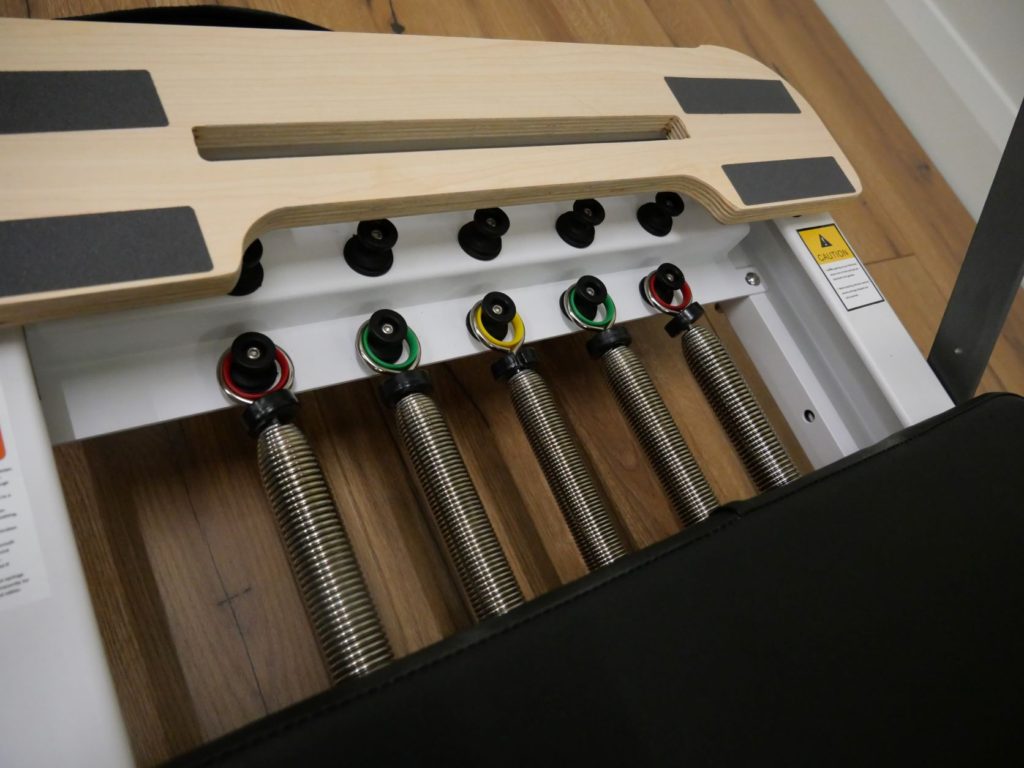Are you choosing the correct reformer spring tension for YOU?

To the untrained eye, the Pilates reformer can appear to be a fancy piece of resistance equipment with different springs designed to create different resistance levels. There is certainly no reason why you can’t use your Pilates Reformer in this way. However, if that is the ONLY way you use it, you may miss many hidden benefits (and fun!).
So how do you decide which spring tension is best for you?
One of the simplest ways is to experiment with slight tweaks in the tension and feel how it changes the exercise for you. But if you want a little more understanding and guidance, read on.
Spring Tensions for Muscle Strength
This is probably the easiest to understand because most people are familiar with it. If you want to build muscle strength (especially of the power/large muscles of the body), you need to add load. So simply choose heavier spring tensions to increase muscle strength.
Spring Tensions for “Core” Activation
Unless you have a degree in anatomy or physical education, this is where things start to get a little murky, but I’ll try to keep it simple. Every joint in the body (not just the spine) has a layer of deep muscles and a layer of superficial (close to the surface) muscles. The deep muscles are all about control, whilst the superficial ones produce power. So whilst increasing spring tension may produce more strength in the superficial muscles, as a general rule going lighter will help target the deeper control muscles.
Spring Tensions for Support and Learning New Movements
This is one of the most overlooked benefits of the Pilates Reformer. Many Classical Pilates moves, such as short spine and teaser, can initially feel foreign and challenging. But when you use the support of the reformer (i.e. enough spring tension to give you support and feedback), we can make these movements easier. This allows you to learn the movement rather than simply battling through feeling like you never make any progress. Don’t be afraid to use your Reformer in this way. It’s not cheating; it’s where the magic happens.
Should I vary my spring tensions across different workouts?
Absolutely. In the fitness and training world, we talk about progressive overload. To produce change, we must challenge our bodies more each session. Across any week, you will ideally use a combination of the above spring tensions to balance muscle strength with core control. If you are repeating classes, I encourage you to challenge yourself to either progressively increase your springs to focus on muscle strength or slowly decrease your springs to challenge your balance and control. And remember, have fun and be willing to explore new ways of moving!
Still trying to understand spring tensions? Why not check out one of our Know your Springs sessions via the Freedom Pilates online platform? CLICK HERE

